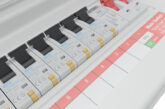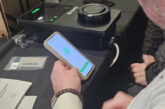
John Hayhurst, Electrical Tutor at City Skills SCC, explains why it is so important for electricians to document EVERYTHING they find during an Electrical Installation Condition Report (EICR) – no matter how small, or seemingly insignificant the issue.
EICRs are a standard part of the job for most electricians and are designed to give a clear picture of the condition of an electrical installation at the time of inspection. But often, during the process, you come across small faults – loose terminals, signs of overheating, or reversed polarity – that are quick and easy to fix.
So, you sort it, tighten a screw or re-terminate a wire, and move on. The job’s better off for it. But then comes the tricky bit: do you record what you found, or leave it out because it’s been fixed? That’s where things can get a bit grey.
It might not seem like a big deal at the time – the problem’s sorted, it’s safe now, and the client just wants the certificate. But skipping that note in the report could put you in a tight spot if anything ever comes back on you. According to Regulation 653.2 of BS 7671, the report should include “any damage, deterioration, defects or dangerous conditions” found during the inspection. That means even if a fault is fixed straight away, the fact it was there in the first place matters — and needs to be documented.
You don’t have to overdo it. A simple note in the observations section does the job. Something like: “Loose connection at cooker switch causing high resistance. Rectified during inspection.” That one line tells the story — you found a problem, fixed it safely, and made sure it was noted for future reference. It’s not about failing the install; it’s about being honest as to what was actually found on the day.
When the EICR turns into a repair job
There’s also the matter of how far you go during an EICR. By nature, it’s not supposed to be a full fault-finding job. It’s non-invasive – mostly visual, with a selection of tests. If you’re pulling out accessories, using power tools, or taking things apart to chase down an issue, you’ve probably crossed over into investigation territory.
When that happens, the correct approach should be to mark it as FI (Further Investigation Required) and either return to it separately or carry on under a new instruction. That keeps the inspection clean and avoids mixing up different types of work.
Now, on to the issue of paperwork – do you need to issue a Minor Works Certificate for a quick fix like tightening a terminal? Technically, no – not if you haven’t added to or altered the circuit in a meaningful way. But in reality, if you’ve completed a full suite of tests on your repair, well, why not? It doesn’t take long to fill out, and it gives you and the client a clear record that something was done, tested, and found to be safe. Even when you don’t issue a certificate, you should still make sure the repair is documented somewhere — either in the EICR itself or in your own job notes.
What matters most is the retesting. If you’ve made a change, no matter how small, the affected part of the circuit needs to be checked again. That includes polarity, Zs, continuity — the basics. It’s not just about ticking boxes; it’s about making sure the installation is safe to use after you’ve worked on it. Skipping this step puts both the user and the electrician at risk.
Why recording matters: a real world scenario
To put things into perspective, let’s imagine the following scenario: a landlord arranges an EICR after a tenant reports receiving a shock from a cooker outlet plate.
Concerned that this could point to a serious safety issue – and not wanting to be held responsible for having provided an unsafe property – the landlord decides not to pass this information on to the electrician.
During the inspection, the electrician identifies a loose connection at the cooker outlet, which could explain the shock. He tightens the terminal, retests the circuit, and moves on — but doesn’t record the fault or the repair.
Later, if the tenant pursues a complaint and contacts the local council’s housing department, the landlord is holding a clean, satisfactory EICR that shows no recorded defects. In that situation, the landlord may be legally protected, as they have documentation confirming the installation was declared safe. The local authority may find it difficult to take action based on the tenant’s complaint alone.
Meanwhile, the electrician is left without a written record of the fault or corrective action taken. If questions are asked, they have no evidence to support their side of the story – no test results, observations or paperwork. This shows how failing to record even minor faults can put others at risk, and not just yourself. It removes accountability, muddies the timeline of events, and can create legal and professional complications.
A simple note in the report protects everyone involved – the landlord, the tenant, and the electrician.
Professionalism is in the paperwork
Leaving things undocumented creates gaps that can come back to haunt you.
If there’s ever a shock, a fault, or even just a question about the work, and you haven’t recorded what you found and what you did, there’s no proof you did things right.
And if you were the last person on-site, the responsibility might land with you – whether that’s fair or not.
Sometimes clients will ask for the job to “just pass,” especially when they’re under pressure to get paperwork sorted quickly. But giving in to that isn’t doing anyone any favours.
A report that doesn’t reflect the actual condition of the installation isn’t just inaccurate, it could also be considered misleading. That kind of thing can damage your credibility, and in a worst-case scenario, it might even be considered a breach of professional standards.
Keeping inspection and repair work separate, even if they’re undertaken at the same visit, is a habit that pays off. Do the EICR first, record everything you see, and if repairs are needed, make sure they’re documented and tested properly.
Whether you issue a Minor Works Certificate or just make a clear note in the report, that record helps show you took the right steps and did the job properly.
In the end, it’s simple: if you found it, record it. If you fixed it, test it. And if you did the job properly, don’t leave the paperwork behind.
Image credit: Sirirak (Adobe Stock)
Find more industry feature articles here








